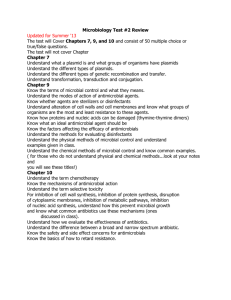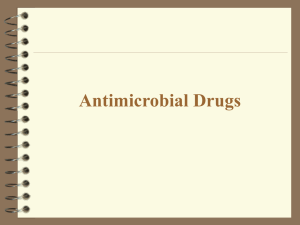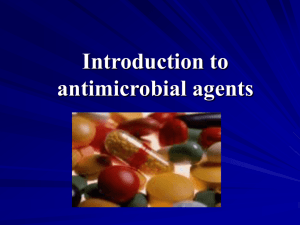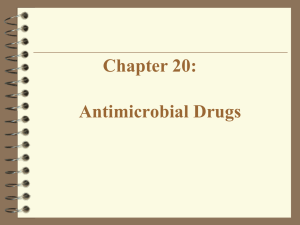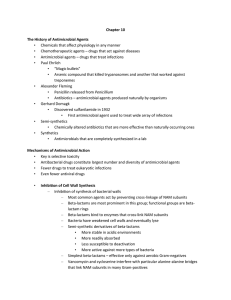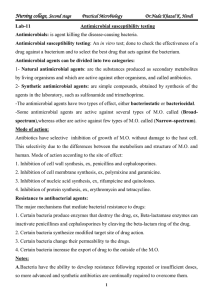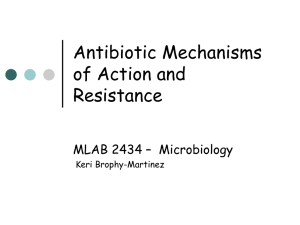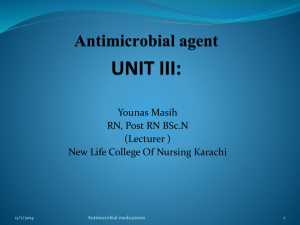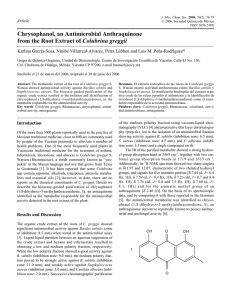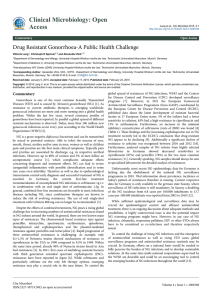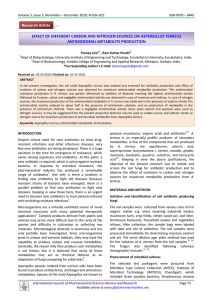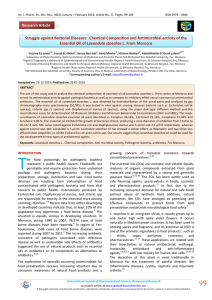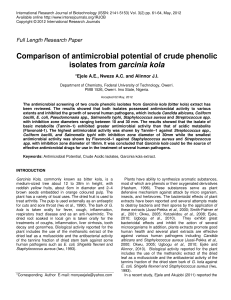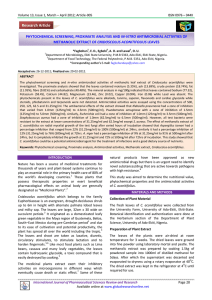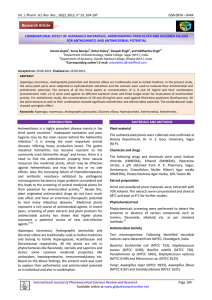Medical Microbiology – Chapter 10 Controlling Microbial Growth in
advertisement
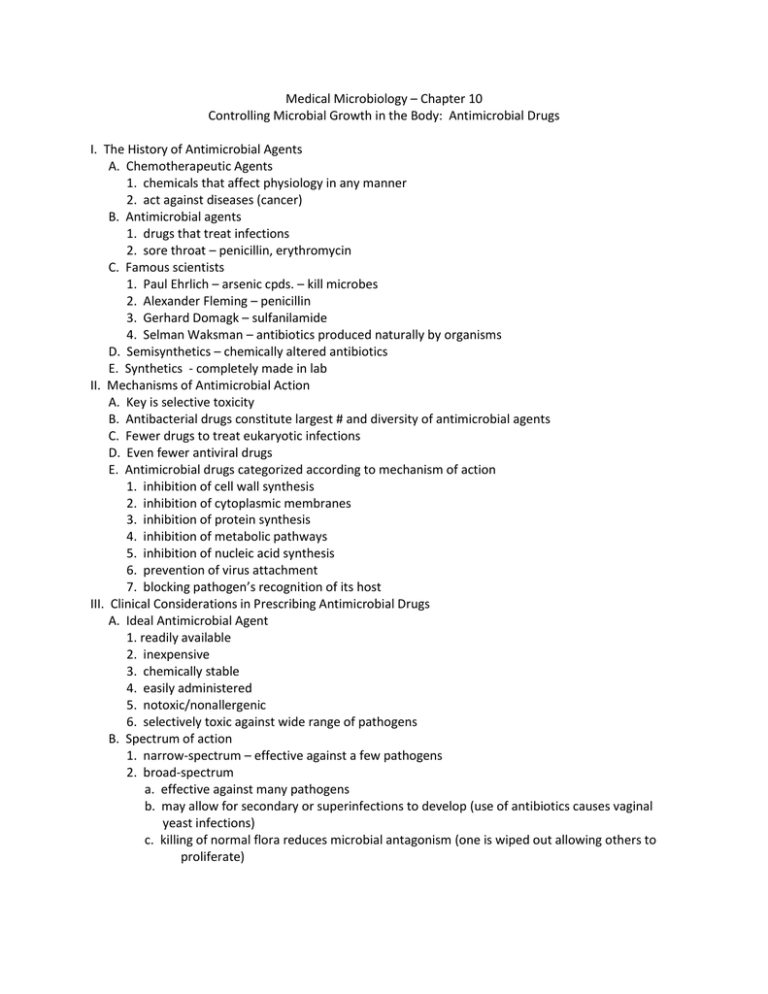
Medical Microbiology – Chapter 10 Controlling Microbial Growth in the Body: Antimicrobial Drugs I. The History of Antimicrobial Agents A. Chemotherapeutic Agents 1. chemicals that affect physiology in any manner 2. act against diseases (cancer) B. Antimicrobial agents 1. drugs that treat infections 2. sore throat – penicillin, erythromycin C. Famous scientists 1. Paul Ehrlich – arsenic cpds. – kill microbes 2. Alexander Fleming – penicillin 3. Gerhard Domagk – sulfanilamide 4. Selman Waksman – antibiotics produced naturally by organisms D. Semisynthetics – chemically altered antibiotics E. Synthetics - completely made in lab II. Mechanisms of Antimicrobial Action A. Key is selective toxicity B. Antibacterial drugs constitute largest # and diversity of antimicrobial agents C. Fewer drugs to treat eukaryotic infections D. Even fewer antiviral drugs E. Antimicrobial drugs categorized according to mechanism of action 1. inhibition of cell wall synthesis 2. inhibition of cytoplasmic membranes 3. inhibition of protein synthesis 4. inhibition of metabolic pathways 5. inhibition of nucleic acid synthesis 6. prevention of virus attachment 7. blocking pathogen’s recognition of its host III. Clinical Considerations in Prescribing Antimicrobial Drugs A. Ideal Antimicrobial Agent 1. readily available 2. inexpensive 3. chemically stable 4. easily administered 5. notoxic/nonallergenic 6. selectively toxic against wide range of pathogens B. Spectrum of action 1. narrow-spectrum – effective against a few pathogens 2. broad-spectrum a. effective against many pathogens b. may allow for secondary or superinfections to develop (use of antibiotics causes vaginal yeast infections) c. killing of normal flora reduces microbial antagonism (one is wiped out allowing others to proliferate) C. Routes of administration 1. topical 2. oral 3. intramuscular injectins 4. IV 5. know how antimicrobial agent will be distributed to infected tissues by blood D. Safety and side effects 1. toxicity 2. allergies 3. disruption of normal microbiota IV. Resistance to Antimicrobial Drugs A.
